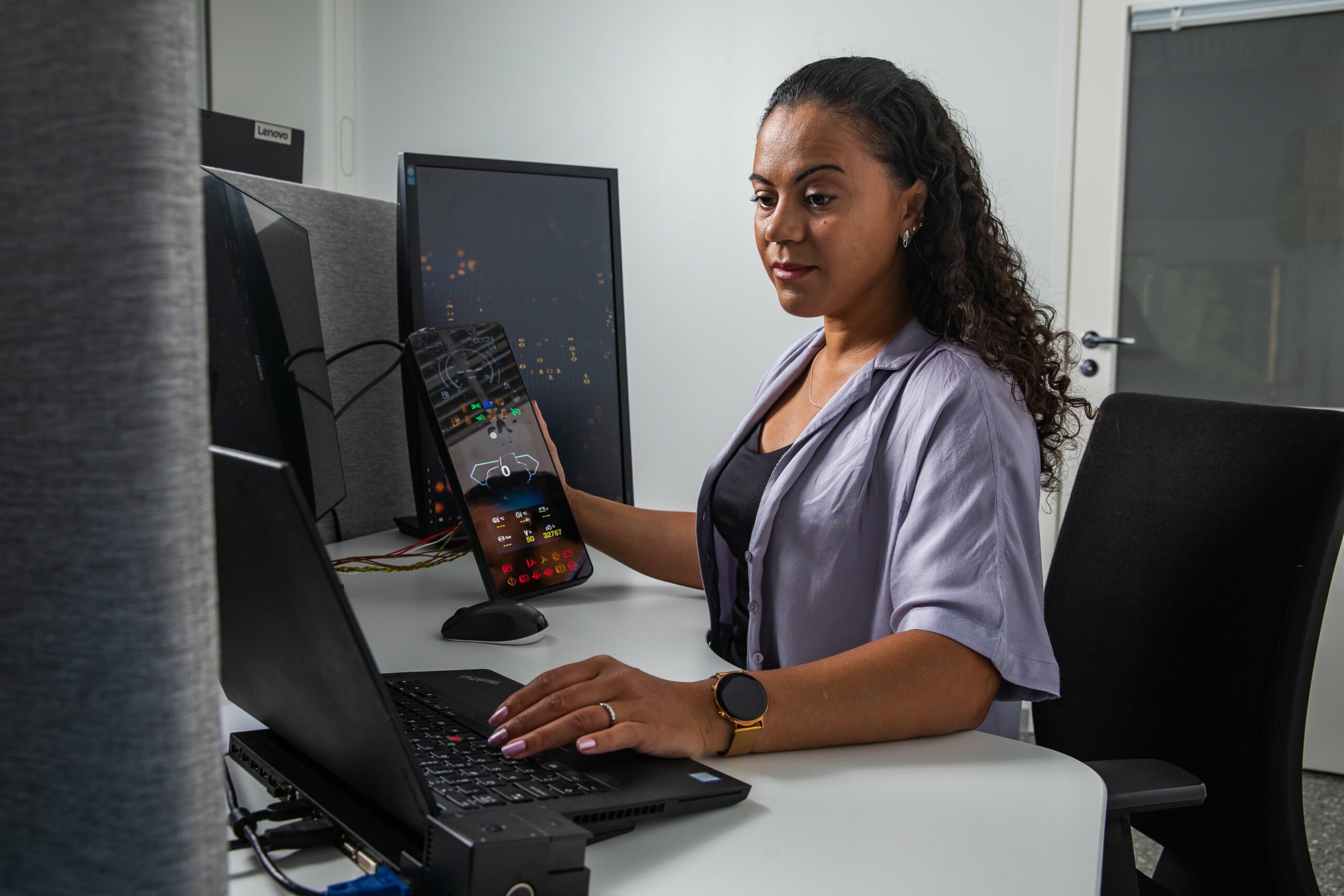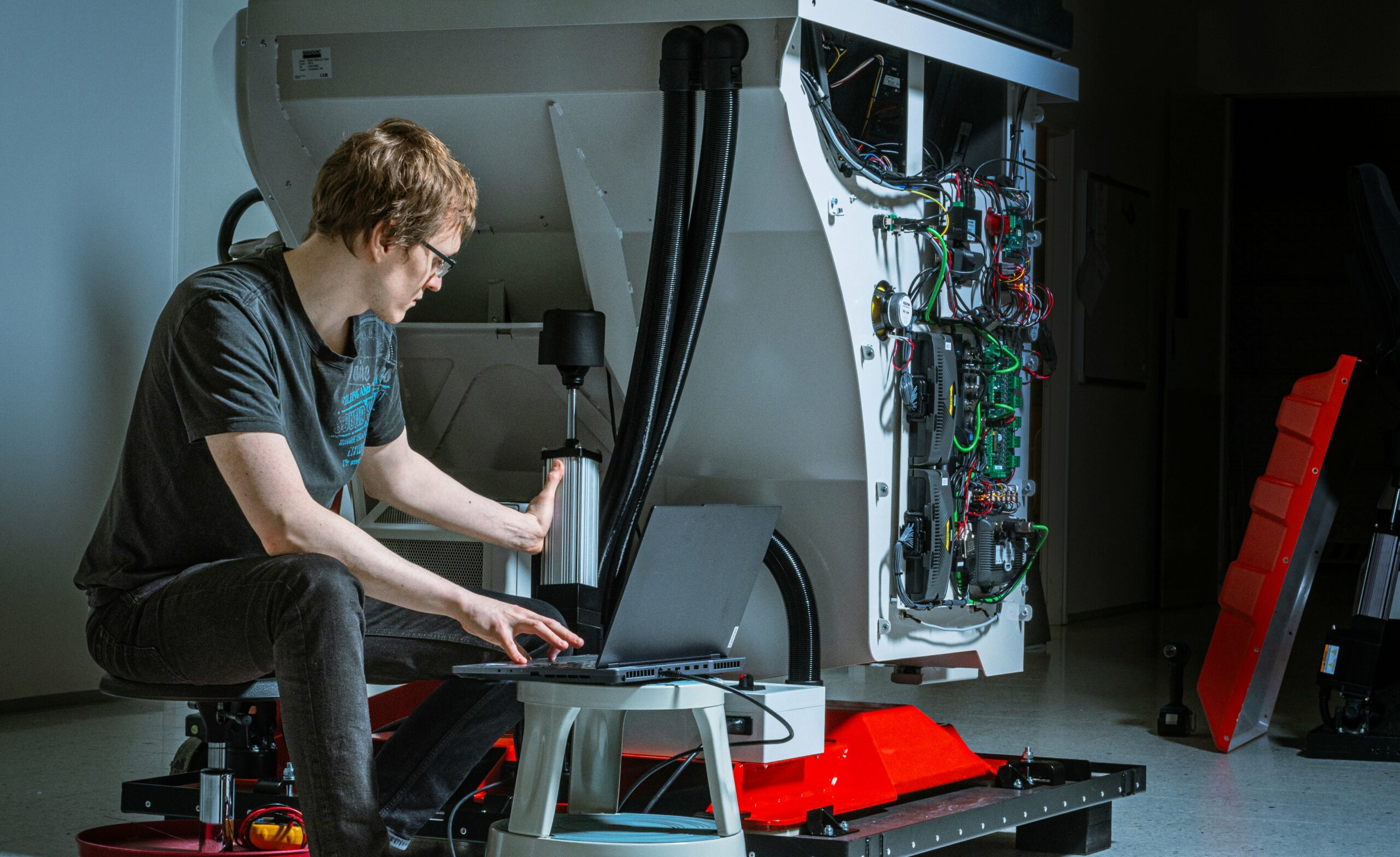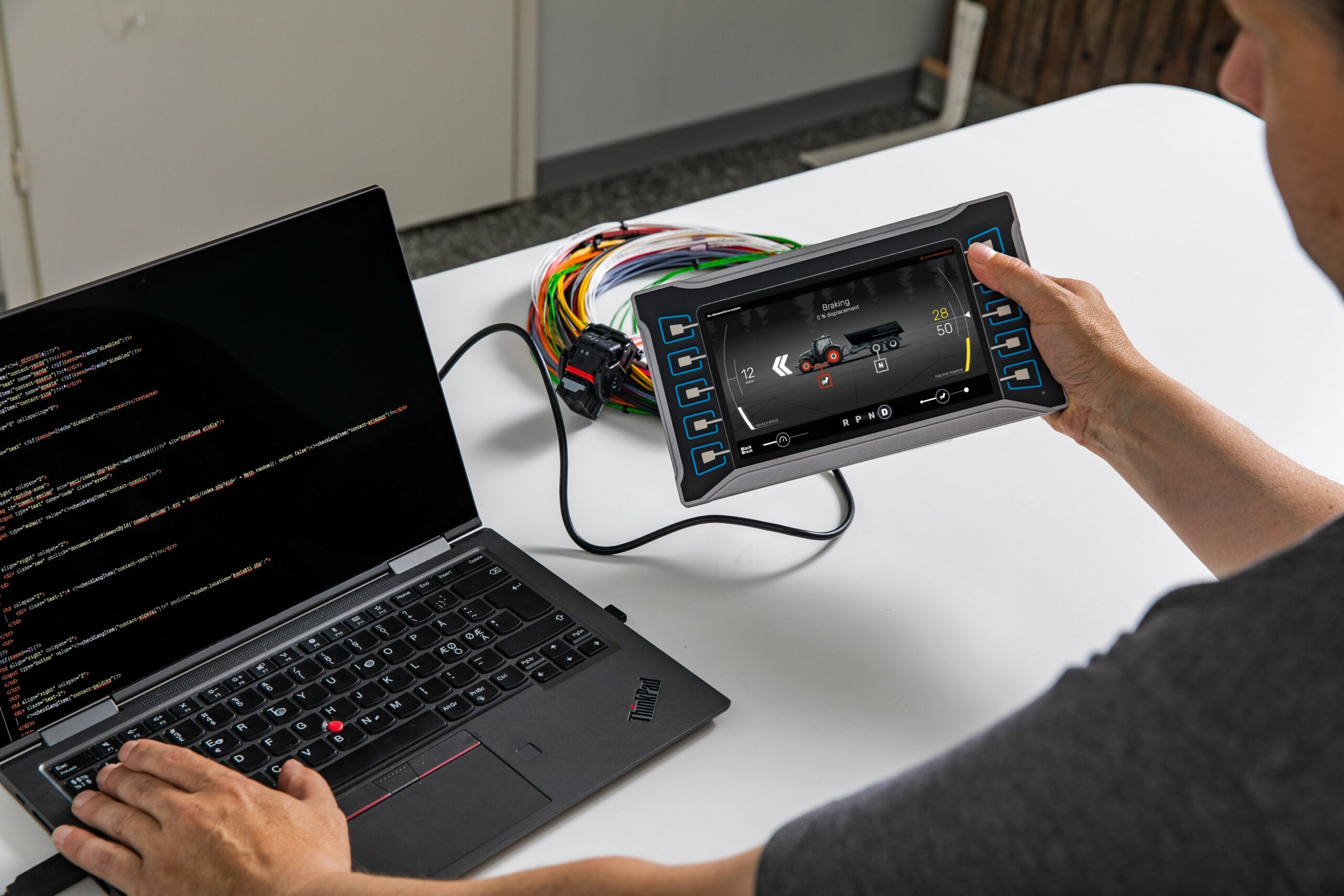A digital twin can be utilised in many ways in the life cycle management of a digital product. It provides information on how a physical device functions and enables the testing of new features before they are integrated into the actual device. This allows for more efficient product management at each stage, from the product’s design, production, use and maintenance to recycling.
A digital twin in the life cycle of a product
Design and product development:
- A digital twin allows you to create a virtual prototype of a product prior to making a physical one, which saves time and money.
- Virtual prototyping and simulation can be used to test product variants, dimension components, optimise performance, iterate designs and run extensive test runs. This will improve the quality of the final product, reduce emissions and optimise costs.
- The simultaneous modelling and simulation of mechanics, electronics, electrical components, hydraulics and software facilitates the design of complex products.
- Simulation allows for the development and testing of a virtual product in situations and environments where testing would be difficult, expensive or dangerous with a physical product. For example, a virtual product can help with the development of autonomous driving algorithms or testing the effects of varying weather conditions.
Manufacturing process:
- A digital twin can be used to simulate the production process and identify potential bottlenecks, errors and optimisation opportunities.
- A digital twin can function as a training tool for new employees to learn the production process before they start working in actual production.
Training, diagnostics, maintenance, and service:
- The status and performance of a product can be monitored in real time, which enables predictive maintenance and troubleshooting and helps minimise downtime, extend the service life of the product and optimise operations.
- A digital twin can help detect and diagnose problems or errors in a physical product or operating environment
- New software and product updates can be tested using a digital twin before they are added to the physical product
- Employees and customers can be safely trained with the help of a digital twin.
Recycling and disposal:
- Towards the end of the product life cycle, a digital twin can be used to guide the recycling process and optimise the reuse of materials.
Customer support and services:
- A digital twin can be used to troubleshoot, solve customer problems remotely and provide support.
- With the help of a digital twin, product upgrades and extensions can be designed and tested according to customer needs.
Operating environment:
- The operating environment can also be digitalised by using a combination of different sensors (such as a lidar, radar, camera, GPS) and adding data from open source databases, building data models and environmental data collected with sensors to the resulting model.
- In combination with simulation tools, environmental data can be used to create virtual operating environments and generate various scenarios in order to develop functions related to autonomy, for instance.
Documentation and history data:
- During the life cycle of a digital product, a digital thread can be formed that contains all of the information related to the product. Up-to-date information about the product life cycle is readily available, including design documentation, manufacturing and component information, as well as upgrade and service information.
Leveraging a digital twin in product digitalised life cycle offers opportunities for better and faster designing, troubleshooting, and predictive maintenance. Furthermore, it facilitates collaboration across teams and departments throughout the life cycle of the product.
Applications across industries for a digital twin
The scope and number of applications for digital twins are ever expanding and applications can already be found in many industries, such as:
- Moving machinery (tractors, cars, forestry or mining machines)
- Production facilities and industrial applications (process, manufacturing, supply chains, maintenance)
- Health care (patient monitoring and care)
- Construction and property management (building automation, control and monitoring of energy consumption, life cycle management)
- Environment (mines, fields, forests, smart cities)
Digital twins have been the topic of discussion for several years now, but recent advances in GPUs (graphics processing units), artificial intelligence, gaming technologies and software platforms have accelerated their adoption. With the advent of virtual and augmented reality technologies, the potential for digital twins is steadily growing.
Digital twins are changing the way we act in the physical world and perceive it. Whether we are talking about optimising manufacturing processes, predicting climate change or enhancing collaboration in remote working environments, digital twins provide an almost infinite number of applications. Digital twins change the way we design, use and interact with the surrounding world. However, realising the full potential of digital twins requires not only technological innovation, but also co-operation, standardisation, and commitment to data interoperability and security.
Simply adding a digital layer over the physical world is not enough for companies to get the most out of digital twins. They need to consider the entire digital life cycle of a product and integrate digitalisation all the way into the business model.
In conclusion, the use of digital twins represents a change in the way we design, create and manage complex systems and processes. By leveraging virtualisation, simulation and data analytics, digital twins offers new opportunities for product innovation, optimisation and life cycle management.
Also read:



